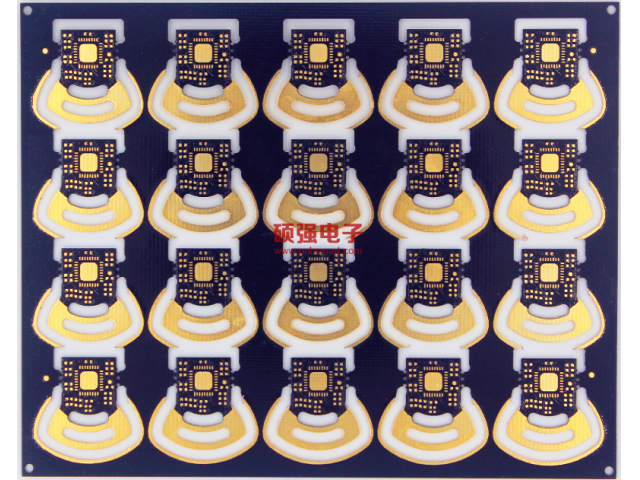In fact, the blistering of circuit board surface is the problem of poor bonding force of board surface, that is the surface quality of board surface, which includes two aspects:
1. Board surface cleanliness;
2. Surface micro roughness (or surface energy). All the blistering problems on the board can be summed up as the above reasons. It is difficult to resist the coating stress, mechanical stress, thermal stress and so on in the subsequent production and assembly process due to the poor or too low binding force between the coatings, resulting in different degrees of separation between the coatings.


This paper summarizes some factors that may cause poor quality of board surface in the process of production and processing as follows:
1. Substrate processing problems: especially for some thin substrates (generally less than 0.8mm), because of the poor rigidity of the substrate, it is not suitable to use the brush machine to brush the substrate. In this way, it may not be able to effectively remove the protective layer specially treated to prevent the oxidation of the copper foil on the board during the production and processing of the base plate. Although the layer is thin and easy to remove the brush plate, it is difficult to use the chemical treatment. Therefore, it is important to pay attention to the control during the production and processing, so as not to cause the substrate on the board The poor bonding force between copper foil and chemical copper causes blistering on the surface of the board. When the thin inner layer is blackened, there will also be problems such as poor blackening and browning, uneven color, and poor local blackening and browning.
2. Oil contamination or other liquid contamination caused by board surface machining (drilling, laminating, edge milling, etc.) and poor surface treatment.
3. Poor brush plate of copper sink: too much pressure of grinding plate before copper sink causes hole deformation, brush out the round corner of the hole copper foil or even the hole leakage of base material, which will cause hole blistering in the process of copper sink plating, tin spray welding, etc.; even if the brush plate does not cause the leakage of base material, but the heavy brush plate will increase the roughness of the hole copper, so in the micro In the process of etching and coarsening, the copper foil is prone to over coarsening, and there will be some quality risks. Therefore, we should pay attention to strengthen the control of the brush plate process, and we can adjust the brush plate process parameters to the best through the abrasion test and water film test;
4. Water washing problem: a large number of chemical water treatment is required for copper plating. There are many kinds of chemical solvents such as acid-base inorganic organic and so on. The water washing of the board surface is not clean, especially the adjustment of oil remover for copper deposition, which will not only cause cross pollution, but also cause the local treatment of the board surface to be poor or the treatment effect to be poor and uneven, Therefore, it is necessary to strengthen the control of water washing, mainly including the control of water flow, water quality, washing time, and plate dripping time; especially in winter when the temperature is low, the washing effect will be greatly reduced, and more attention should be paid to the control of water washing;
5. Micro etching in the pre-treatment of copper deposition and the pre-treatment of graphic electroplating: excessive micro etching will cause base material leakage around the orifice, and cause blistering around the orifice; insufficient micro etching will also cause insufficient bonding force, and cause blistering; therefore, it is necessary to strengthen the control of micro etching; generally, the micro etching depth of the pre-treatment of copper deposition is 1.5-2 μ m, and the micro etching of the pre-treatment of graphic electroplating is 0.3-1 μ M, If possible, it is better to control the thickness or corrosion rate of micro etching by chemical analysis and simple test weighing method; generally, the color of the plate after micro etching is bright, uniform pink, without reflection; if the color is uneven, or there is reflection, it indicates that there is quality risk in the pre-processing of the process; pay attention to strengthen the inspection; in addition, the copper content of micro etching tank, tank liquid temperature, and load, The content of micro etchant should be paid attention to;
6. Poor reworking of copper sink: some reworked plates after copper sink or figure transfer are not well faded during reworking, Incorrect rework method or improper control of micro etching time in the process of rework or other reasons will cause blistering on the plate surface; if the poor copper deposition is found on the line during rework of copper deposition plate, it can be directly removed from the line after oil washing without acid pickling and direct rework without erosion; it is better not to remove oil again and micro etching; for the plates that have been electrically thickened, the micro etching groove shall now be removed and plating shall be paid attention to time control, One or two plates can be used to roughly measure the time of plating removal to ensure the effect of plating removal; after plating removal, a group of soft grinding brushes after the plate brush machine shall be used to brush gently, and then the copper shall be deposited according to the normal production process, but the etching time shall be halved or adjusted as necessary;
